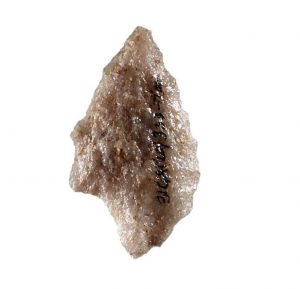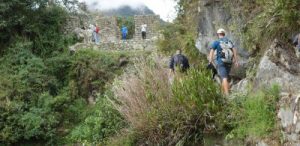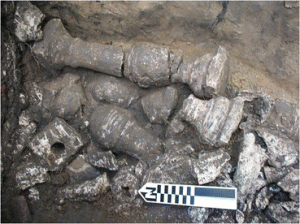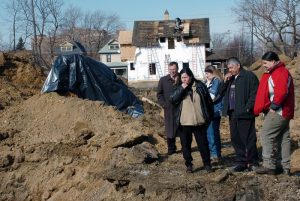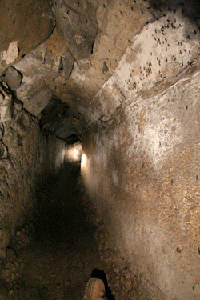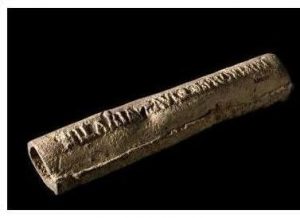Eight hundred years after its glory the Cahokians brought about, Illinois nurtured another group of faithful pilgrims, venturing from Nauvoo, Illinois to Utah: the Mormons. However, their pilgrimage was different from that of those who walked days and nights towards Cahokia from the Emerald Acropolis: they were forced to move by religious persecution. Their aim was to find a new homeland where they could establish churches and reside in peace. The pilgrimage lasted for as long as 23 years (Haury-Artz 2016), over the length of 1415 miles (National Park Service 2019), a trail now called the Mormon Pioneer Trail, commemorated by the state government and celebrated by the National Geographic as one of the top 10 historic pilgrimages across the world (National Geographic). It is also known as one of the greatest Euro-American immigration in history, crossing both the Great Plains and the Rocky Mountains (Haury-Artz 2016).
The first wave of the journey started on February 4th, 1846. Led by approximately 500 leaders, a population of 70,000 Mormons migrated from Nauvoo towards Salt Lake City, Utah (Mormon Historic Sites Foundation). The cold weather made the pilgrimage difficult, not to mention the geographical condition, and by the spring of 1847, already 400 lives had been taken by the harsh condition (University of Nebraska Lincoln). Throughout the whole journey, the Mormons travelled mostly by wagons, handcarts and by foot. Along the way, many camps were established as temporary settlements. For example, the Locust Creek Camp is one of their stopping points soon after the journey started in 1846, and also where “Come, Come Ye Saints” was written. The song is now the most well-known hymn of the Mormons and even an anthem to the pilgrims of that era, encouraging them to keep going with the support of faith. The handcart expedition took a slightly different track than the ones who travelled by wagons. This path included a number of camps as well, but above that, a few handcarts crafting sites were discovered – the Mormon Handcart Park, for instance, marked a settlement as well as a site where people built their handcarts for the travel. When the Mormons were to cross the Missouri River, they took ferries, the most used of all being the North Ferry, while the handcart travellers crossed the Des Moines River by not only ferry, but also floating bridges believed to be by Grand Avenue. Meanwhile, alternative routes were also taken when on-land conditions were too difficult, or when rivers were hard to cross (Haury-Artz 2016). The trails are illustrated as below:
Archaeologists were evidently involved in the studies of this great pilgrimage: “Site records, historical documents, and map resources were examined” with previous studies. While aerial photographs of GIS technology was used to further determine the exact route of the travel, LiDAR images were also taken to clearly illustrate the trails the Mormons left behind. Moreover, land surveys and explorations took place to locate some distinctive and special campsites, such as cemeteries of the ones who did not survive the journey, inns and cabins built for better-sheltered settlements (Haury-Artz 2016).
For further readings on the Mormon Trail:
- https://utah.com/mormon/pioneer-trail-history
- https://archive.org/details/historicresource00kimb/page/6
References:
Haury-Artz, Chérie
2016 Exploring Mormon Trails Across Iowa. Electronic Document,
https://archaeology.uiowa.edu/exploring-mormon-trails-across-iowa, accessed November
24, 2019.
Mormon Historic Sites Foundation
Mormon Iowa Trail. Electronic Document, http://mormonhistoricsites.org/mormon-iowa-trail/,
accessed November 24, 2019.
National Geographic
Top 10 Historic Pilgrimages. Electronic Document,
https://www.nationalgeographic.com/travel/top-10/pilgrimages-sacred-journeys/#close,
accessed November 24, 2019.
National Park Service
2019 Mormon Pioneer: Maps. Electronic Document,
https://www.nps.gov/mopi/planyourvisit/maps.htm, accessed November 24, 2019.
University of Nebraska Lincoln
The Mormon Trail. Electronic Document,
https://cdrhsites.unl.edu/diggingin/trailsummaries/di.sum.0006.html, accessed November
24, 2019.
Images:
Haury-Artz, Chérie
2016 Exploring Mormon Trails Across Iowa. Electronic Document,
https://archaeology.uiowa.edu/exploring-mormon-trails-across-iowa, accessed November
24, 2019.




